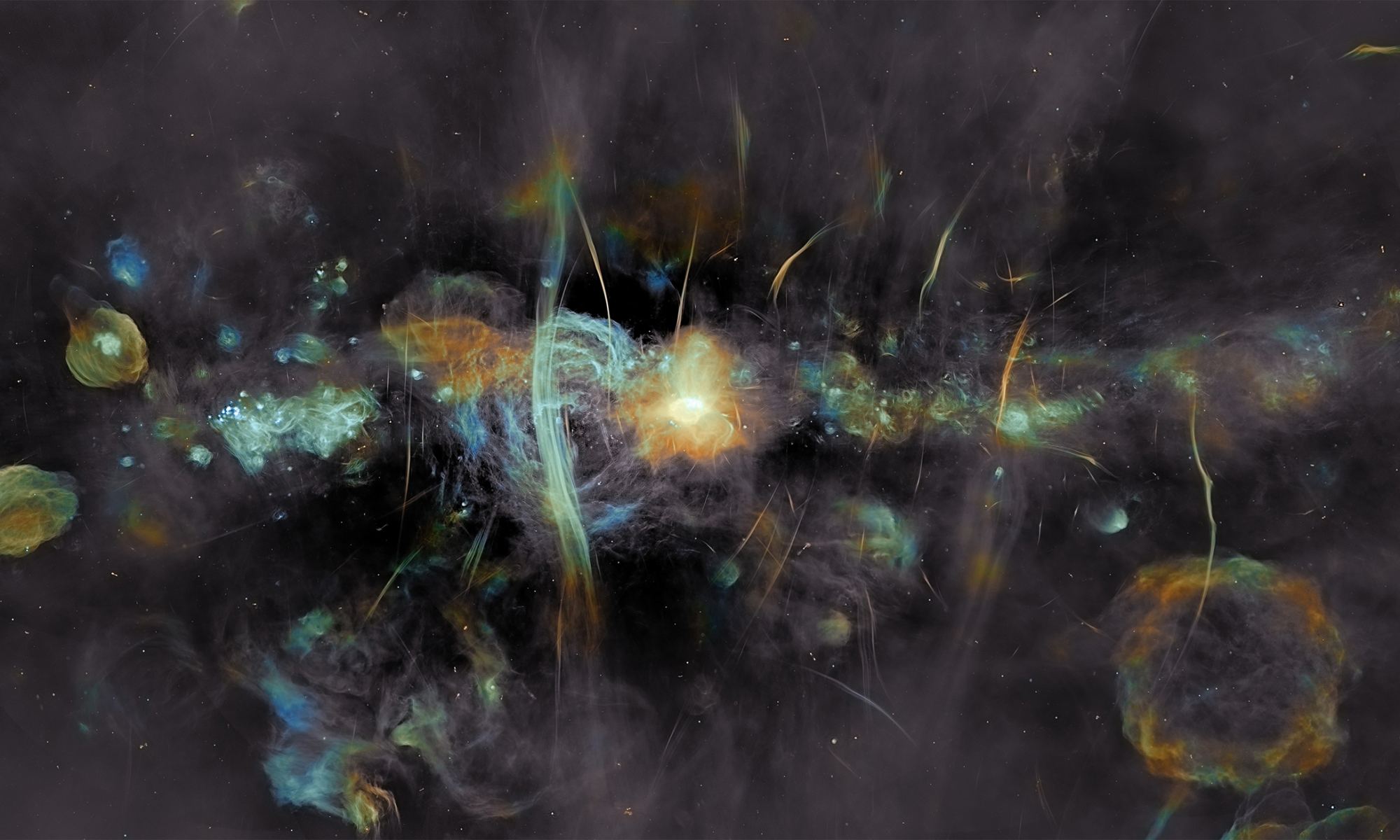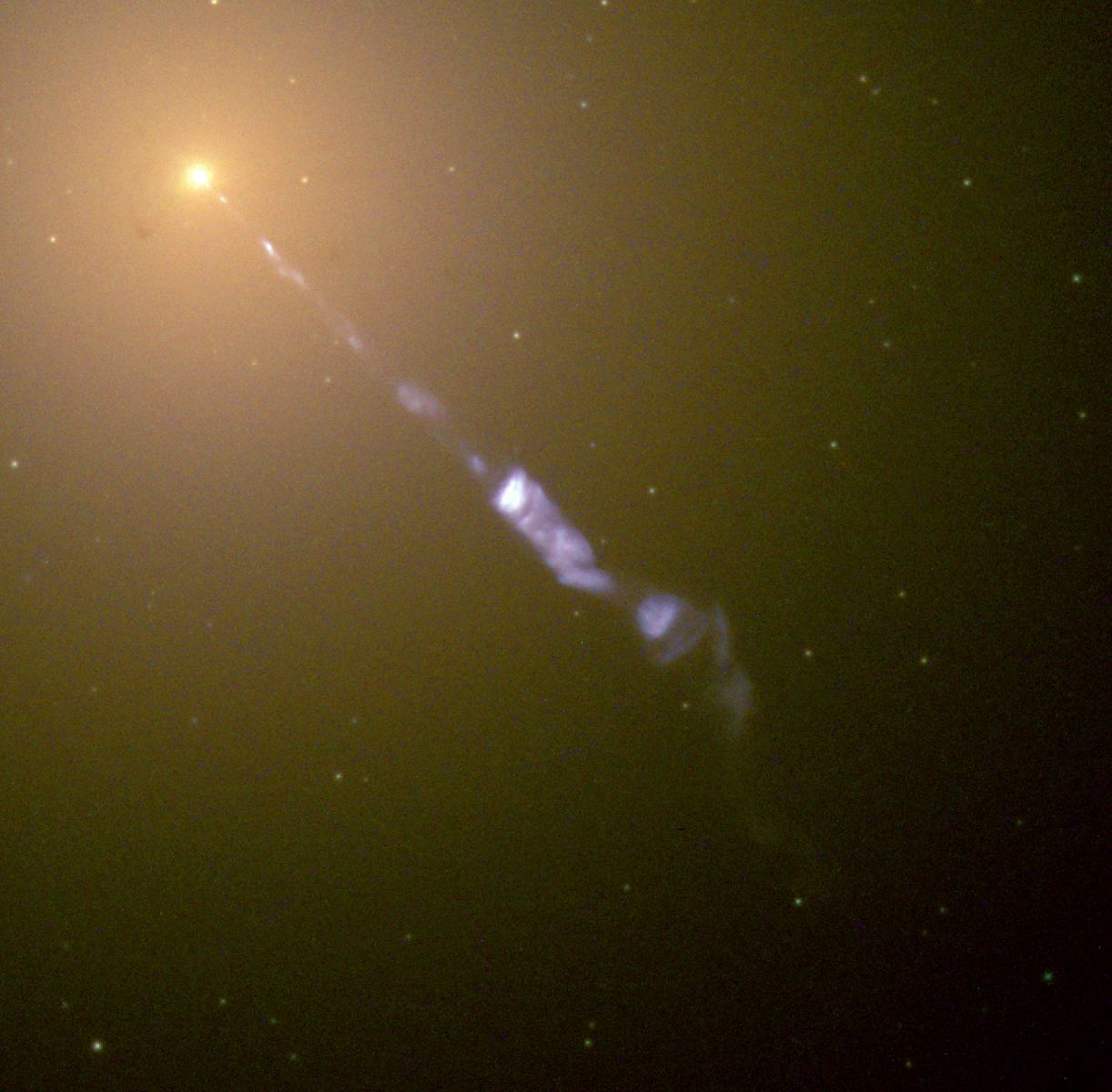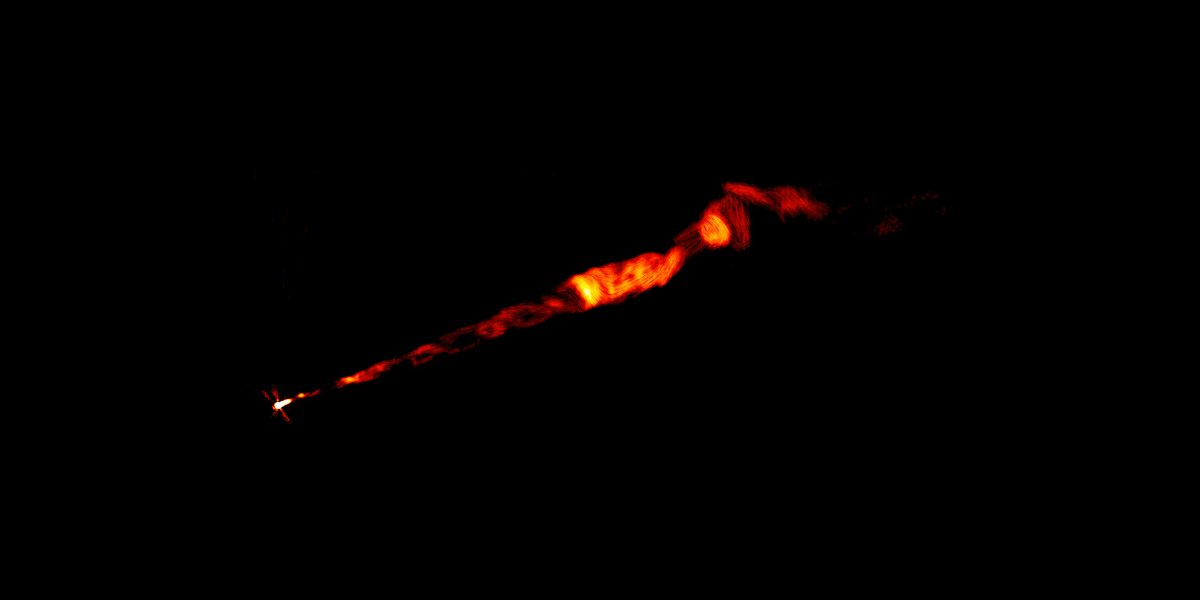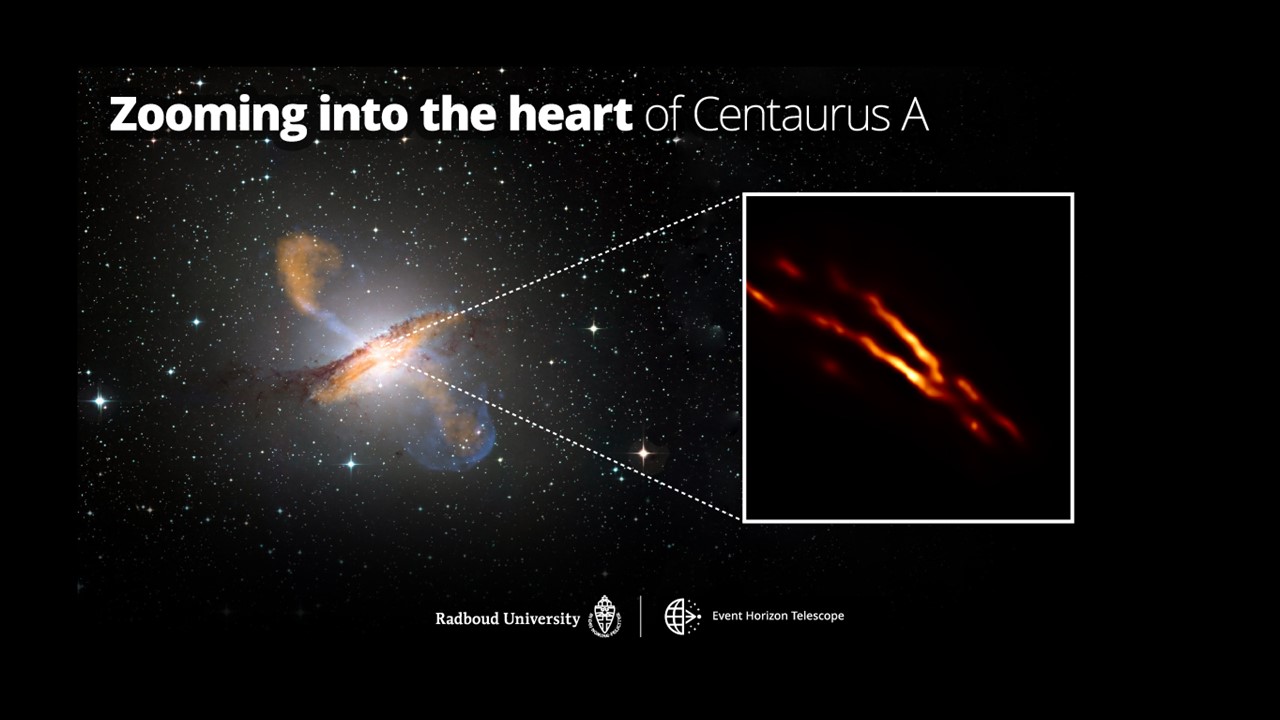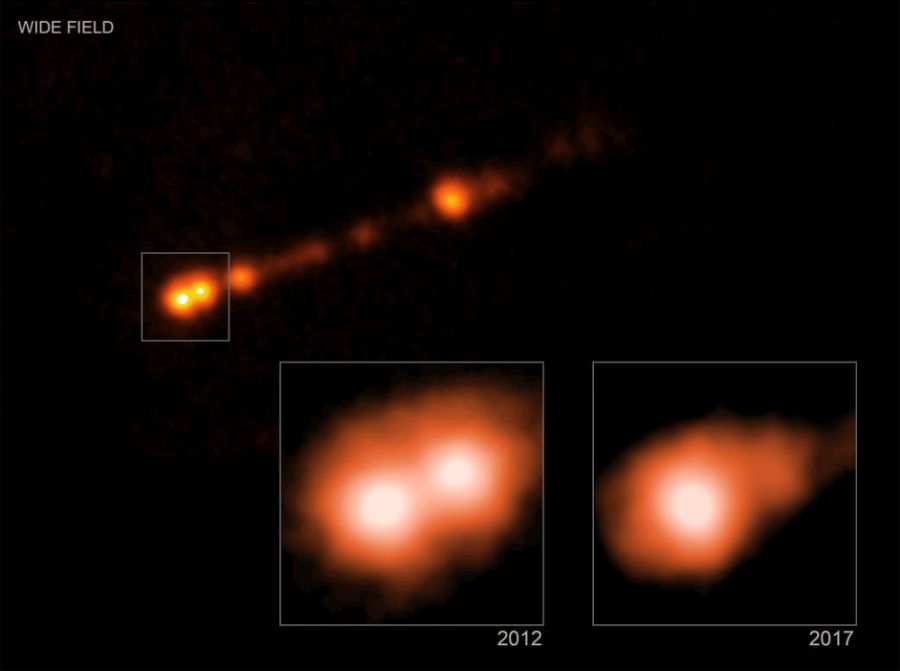In April 2019, the Event Horizon Telescope (EHT) collaboration made history when it released the first-ever image of a black hole. The image captured the glow of the accretion disk surrounding the supermassive black hole (SMBH) at the center of the M87 galaxy, located 54 million light-years away. Because of its appearance, the disk that encircles this SMBH beyond its event horizon (composed of gas, dust, and photons) was likened to a “ring of fire.” Since then, the EHT has been actively imaging several other SMBH, including Sagittarius A* at the center of the Milky Way!
In addition, the EHT has revealed additional details about M87, like the first-ever image of a photon ring and a picture that combines the SMBH and its relativistic jet emanating from its center. Most recently, the EHT released the results of its latest observation campaign. These observations revealed a spectacular flare emerging from M87’s powerful relativistic jet. This flare released a tremendous amount of energy in multiple wavelengths, including the first high-energy gamma-ray outburst observed in over a decade.
Continue reading “M87 Releases a Rare and Powerful Outburts of Gamma-ray Radiation”

